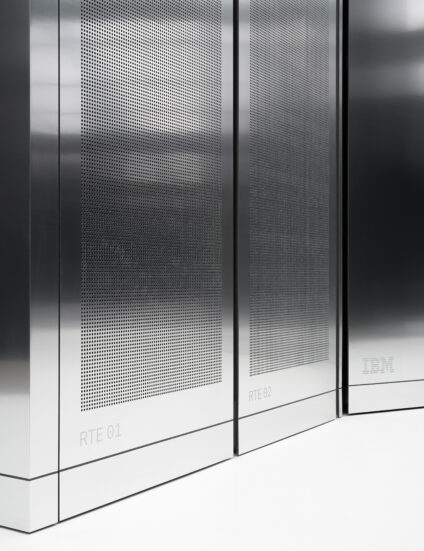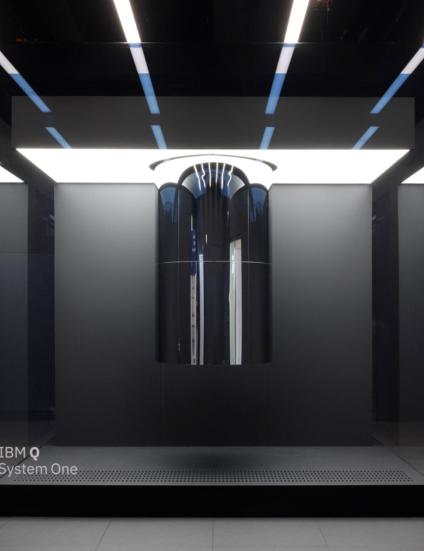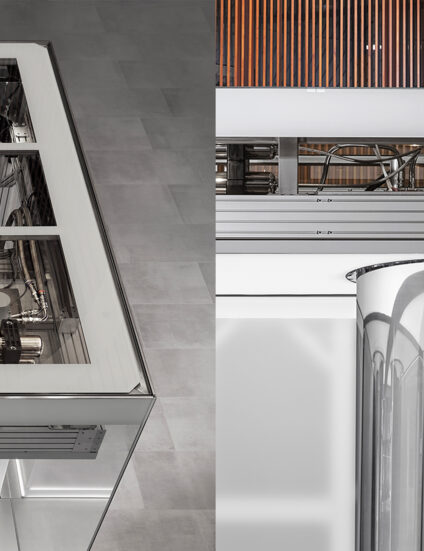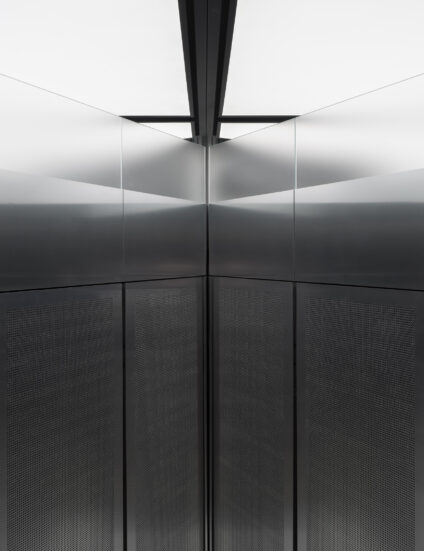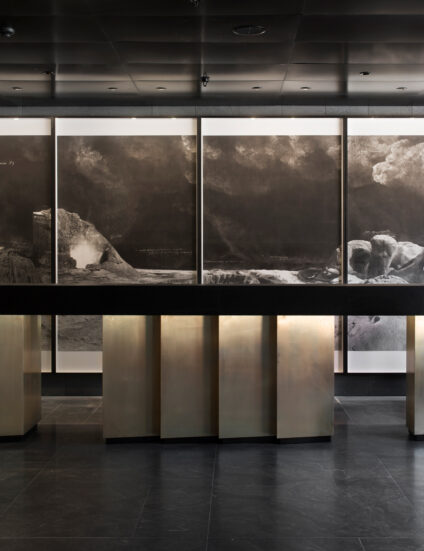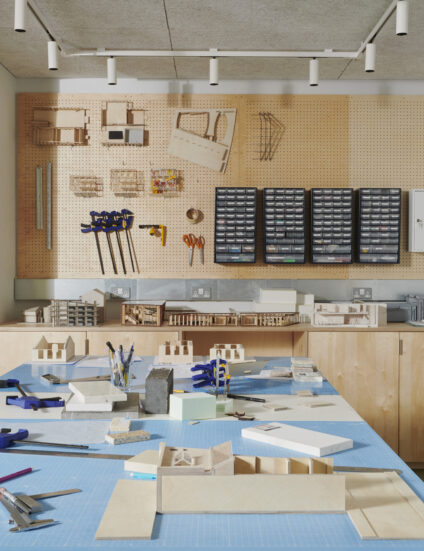Our work with IBM has spanned almost a decade. During this time, our collaborations have been most recognised for our design input on System One in 2019 and System Two in 2023. In collaborating with IBM, part of our role has been to help define how its quantum technology manifests both in and out of lab spaces. Looking closely at design as a vehicle to make complex technologies more accessible and usable.
With the potential to solve problems beyond the reach of ‘classical’ computers, current IBM quantum computers can be accessed through the cloud today. To make them widely usable beyond the confines of the research lab, information processing and the machines that facilitate it needed to be re-imagined. Together with our sister studio Map Project Office, our challenge has been to satisfy the computer’s functional demands, whilst defining the archetype that this new form of computing requires.
To realise this ambition, System One was separated into a series of complex, interwoven structures and consolidated into a single volume. Each structure supports a custom set of components, such as the intricately engineered cryostat, where the quantum chip is suspended. Goppion, a Milanese manufacturer of specialise glass display cases, realised our concept for the outer vitrine and its 3 metre square glass panels. The resulting design has become an icon of IBM’s computing progress.
Since its realisation, System One has also become the first out-of-lab commercial quantum computer dedicated to healthcare research. Alongside our sister studio Map Project Office, were asked to update the CMF strategy whilst retaining the iconic, recognisable elements of the original design for a new location at the Cleveland Clinic in Ohio. New elements include lighter finishes that suit the day-lit space and a combination of translucent and transparent materials that reveal some of the inner structure and components. The resulting installation reminds us of the lab environment where the system originated and visibly demonstrates that it is a complete and fully functioning system. Previously, generations of quantum computers saw components dispersed around a lab, in IBM Q System One all components fit inside a compact footprint which was a major step forward in the commercialisation of quantum computing at the time of its inception.
The installation at the Cleveland Clinic will advance biomedical research across clinical and pharmaceutical needs. As designers, our intention is to always harness the power of creativity to solve problems and so it’s a great moment to see how IBM System One will be able to assist in the complexities surrounding the advancement of biomedical research.
For System Two, the team needed to support an evolving and advanced technology with the ability to grow and scale within space. While technology is advancing rapidly, the team imbued their design with moments of familiarity and warmth – design elements that would both connect System Two to its predecessor, as well as ensuring that its operation was considerate towards its users. The space occupied by the system is delineated by two corner glass panels – a nod to the vitrine of System One – while the team also designed intuitive storage that is integrated within the system and prioritised the use of simple, high quality raw materials throughout. It is an emphasis on clarity and user experience that belies the complexity of the field within which it operates.
